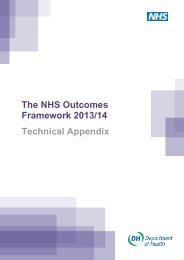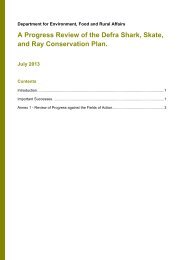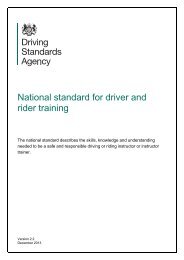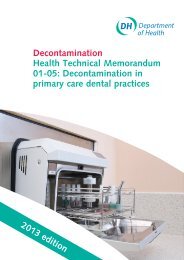A study of Patent Thickets (1.31Mb) - UK Intellectual Property Office
A study of Patent Thickets (1.31Mb) - UK Intellectual Property Office
A study of Patent Thickets (1.31Mb) - UK Intellectual Property Office
You also want an ePaper? Increase the reach of your titles
YUMPU automatically turns print PDFs into web optimized ePapers that Google loves.
A Study <strong>of</strong> <strong>Patent</strong> <strong>Thickets</strong> 55<br />
10 per cent in pharmaceuticals and R&D services to less than 0.1 per cent in construction, oil<br />
and gas services, real estate, law, and accounting.<br />
Our estimates <strong>of</strong> the model for entry into patenting are shown in Table 4.3 below. The first<br />
column is for estimates that have not been corrected for the fact that we sampled non-patenting<br />
firms rather than including the entire population, and the next two columns are weighted<br />
estimates that do adjust for the sampling strategy. Correcting for sampling made little difference<br />
to the coefficients <strong>of</strong> interest, although it reduces the firm size coefficient quite a bit, because<br />
non-patenters tend to be smaller firms. 35 The coefficient estimates shown are elasticities <strong>of</strong> the<br />
probability that a firm will enter into patenting in a particular technology in response to a change<br />
in the variable.<br />
Accelerated failure time - Log Logistic<br />
Variable Unweighted Weighted by sampling probability<br />
Log (triples density in class) -0.121*** -0.123*** -0.128***<br />
(0.007) (0.007) (0.008)<br />
Log (patents in class) 0.678*** 0.696*** 0.738***<br />
(0.020) (0.020) (0.022)<br />
Log assets 0.156*** 0.048*** 0.052***<br />
(0.006) (0.006) (0.006)<br />
Log (triples density) 0.004**<br />
* Log assets (0.002)<br />
Log (patents) -0.032***<br />
* Log assets (0.007)<br />
Industry dummies stratified# stratified# stratified#<br />
Year dummies yes yes yes<br />
Log likelihood -59,813.9 -51,369.1 -51,357.8<br />
Degrees <strong>of</strong> freedom 35 35 37<br />
Chi-squared 2178.2 1982.1 1992.5<br />
Coefficients for the hazard <strong>of</strong> entry into a patenting class are shown.<br />
Standard errors are clustered on firm. *** (**) denote significance at the 1% (5%) level.<br />
998,219 firm-TF34 observations with 12,991 entries (29,435 firms)<br />
Time period is 2002-2009. Sample is all <strong>UK</strong> firms with nonmissing assets<br />
# Estimates are stratified by industry - each industry has its own baseline hazard. [<br />
Focusing on our variables <strong>of</strong> interest and on the weighted estimates, we see that aggregate<br />
patenting in a technology class is a strong predictor <strong>of</strong> whether a firm enters that class. A<br />
doubling <strong>of</strong> patenting is associated with a 70 per cent higher probability <strong>of</strong> entry (standard error<br />
2.0%). However, when we include the triples density in the class, we find that it depresses entry.<br />
Doubling the intensity <strong>of</strong> triples in a class is associated with a highly significant 12 per cent lower<br />
hazard <strong>of</strong> entry into that class (standard error 0.7%).<br />
35 The sampling weights effectively downweight the non-patenters, so the fact that they are smaller has less impact<br />
on the prediction.

















